How to Identify Plants Growing in Your Yard
Can you name every plant growing in you yard?
I sure wouldn’t have been able to until recently. Even though I love spending time in my yard, I didn’t know much about what was growing there – from the trees, to the shrubs, to the grass.
The good news is, it is easy to figure out. You can use an app to identify plants! All you have to do is upload a photo. It is easy to find out quickly what is growing in your yard. But why bother?
Getting to know your yard is the first step towards making it better
Our yards are full of potential opportunities to help the environment! But the reality is that most of the plants we currently have in our suburban yards aren’t great for our insects, pollinators and song birds. Mainly because they are non-native plants from other parts of the world that our local insects can’t eat!
Adding more native plants to our yards will increase biodiversity and support more species. If you are new to native plants be sure to read my Native Plants 101: Beginners Guide.
80% of your yard is likely non-native plants
My guess is that 80% of the plants in your yard are non-native to the United States. Don’t worry, you are not alone! That is the norm for most suburban yards.
Beyond our Texas Live Oak trees which are a prominent native tree in the Texas Hill Country, I discovered almost every plant in my yard was non-native before I started improving our landscaping.
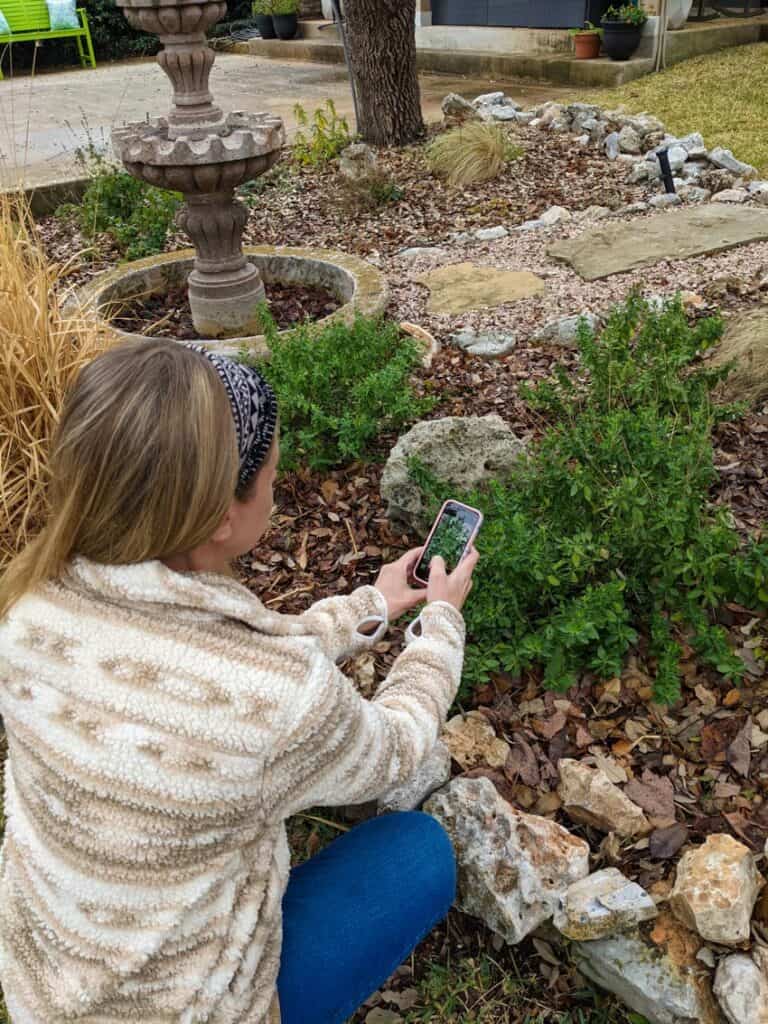
You can use an app to identify plants!
Ok, let’s get started figuring out just what is growing in your yard! There are several plant id apps out there, but the one I use is called iNaturalist. It is a free app that can help you immediately identify any plant (or animal!) by uploading a photo.
I have found the app to be hugely beneficial and interesting. In addition to my own yard, I use the app whenever I am out in nature to discover new plants. You can see my observations here.
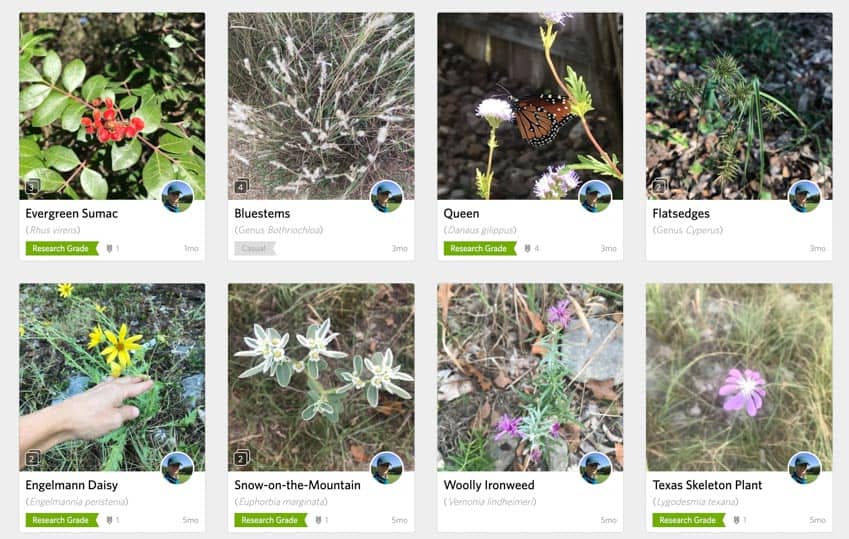
How to use iNaturalist to learn about plants in your yard
1. Download the iNaturalist app
The free iNaturalist app can be downloaded on both Android and Apple devices from either the Google Play store or Apple App Store. You can also access iNaturalist through their website if you prefer to use that instead of an app.
2. Upload few photos of your plant
I recommend taking three photos of the plant that you are looking to identify to give iNaturalist the best chance at identifying it correctly:
1) A closeup photo of a flower or other unique feature
If it is a flowering plant, get a closeup of the flower. It can help to have your hand in the photo holding the flower stem to help gauge the size of the flower. If the plant doesn’t have flowers but has other unique features such as the bark of a tree, a seedpod, or berries, be sure to get a closeup of those.
2) A closeup photo of the leaves
Get a good shot of the leaves of the plant. The shape and positioning of the leaves can go a long way in identifying a plant.
3) A picture of the full plant
Try to get a farther back shot of the plant to view it in its entirety.
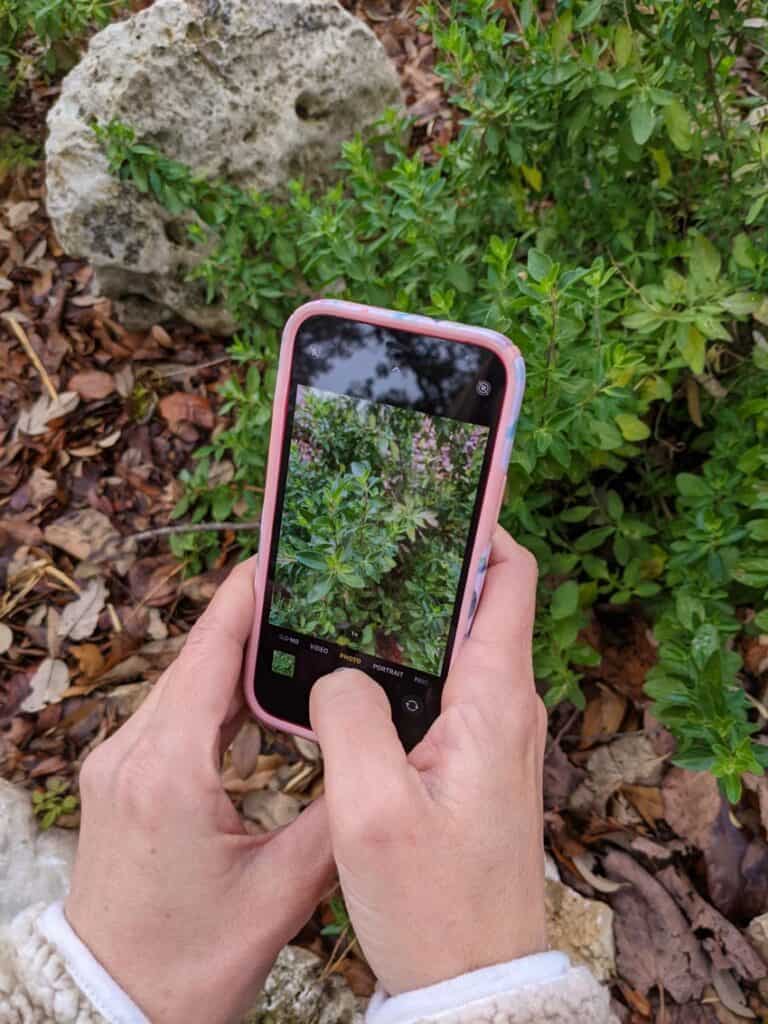
3. Choose”What did you see?”
Once you have clicked “Observe” and uploaded your three photos, click “What did you see?” to view suggestions. iNaturalist uses artificial intelligence to provide you with its best guess of your plant. There will be several options, with the most likely at the top.
It will also tell you if visually similar plants have been observed nearby. That is a good indication that it could be the same as your plant!
4. Look at plant information and pick closest match
Click the circle with the “i” next to each option for more information. iNaturalist will tell you more about the plant including whether it is native to the US and whether or not it is considered invasive.
It’s ok if you aren’t 100% sure which option is your plant. Choose your best guess. Also be sure to select “Captive / Cultivated” when uploading your plants. That tells iNaturalist that your observations are from your yard, not a natural area.
Once your observation is uploaded, other citizen scientists (i.e., regular people who love plants!) can add their own ID to help confirm your selection or suggest another.
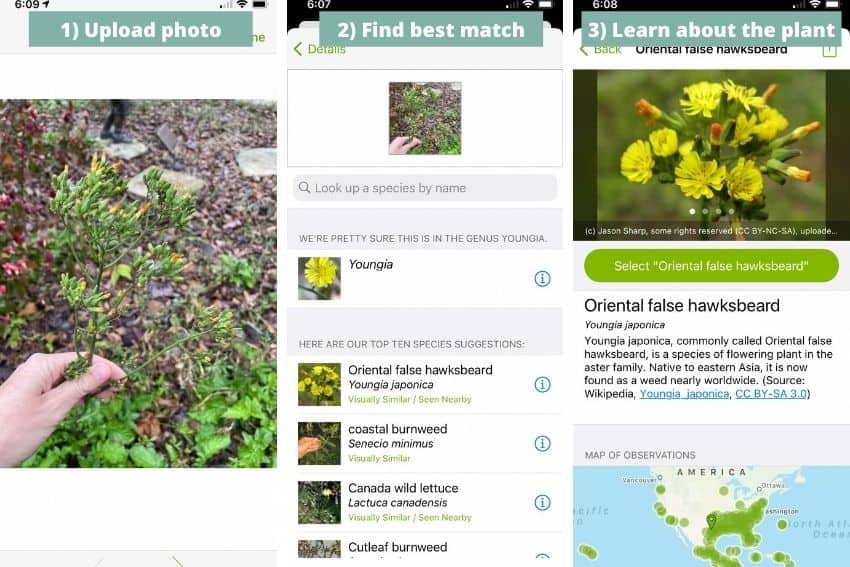
Tips for identifying plants in your yard
1. Spring or summer is the optimal time
Pick a nice summer day to head outside for an hour of exploration in your yard with your iNaturalist app! It may be difficult to use the app to identify plants in your yard if many of them have gone dormant, died back, or lost their leaves in the winter.
Wait until they are actively growing and flowering plants have blooms before trying to identify them.
2. Work your way around your yard from top to bottom
1) Start with the trees
Start with the trees in your yard. In addition to our Live Oak trees, I learned we had three non-native trees – a Crepe Myrtle, Ligustrum (very invasive!), and a Chinese Pistache (also invasive).
2) Move on to the landscaped areas
Once you’ve identified the trees, move on to any shrubs you have in your landscaping. I discovered that the numerous shrubs surrounding my bird fountain were invasive Nandina. If you have this common landscaping plant, here are five reasons you may not want Nandina in your yard.
Next, identify any other flowering plants, ornamental grasses, vines, etc. that you have growing in your yard. Upload them to iNaturalist so you have a running list of what is in your yard.
My yard list includes Sago Palms (native to Asia), Liriope (Asia), Holly Fern (Asia), Star Jasmine (Asia), Society Garlic (South Africa), and Bulbine (South Africa).
3) Finish with the grass
What likely takes up the majority of your yard? A high-maintenance, water guzzling, non-native grass that offers very little ecological benefits! In my yard it is St. Augustine grass. However, I am on a mission to remove a good chuck of it in my backyard in 2021 and replace with native plants!
You’ve identified plants in your yard! Now what?
If nothing else, spending an hour outside in your yard identifying plants is bound to be an enlightening experience! Now that you’ve opened your eyes to all the (non-native) plants in your landscaping, you’ll start seeing them everywhere.
You’ll soon notice that we live in very uniform neighborhoods with little plant diversity.
But it doesn’t have to be that way. We can each be the hero of our yards, by introducing more native plants, one plant at a time! Here are some tips to get you started.
Pin this to help spread the word!
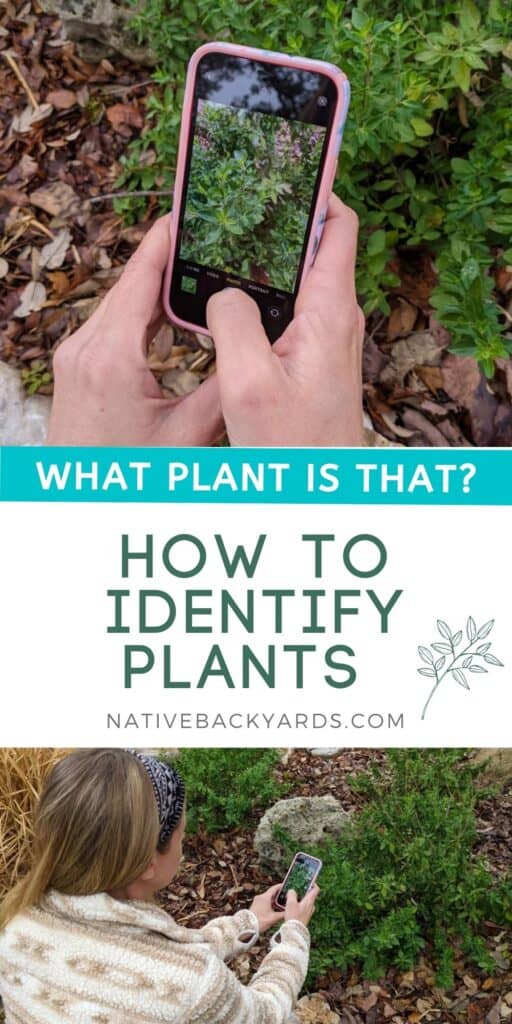
Visit the Native Backyards Shop
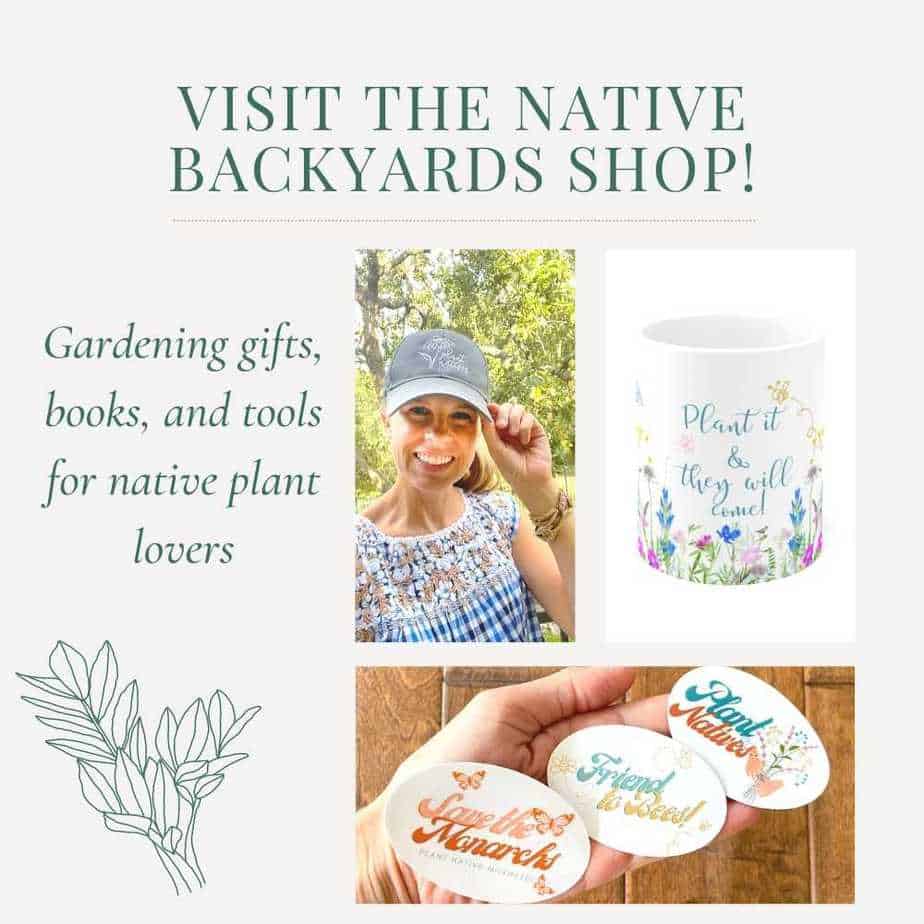
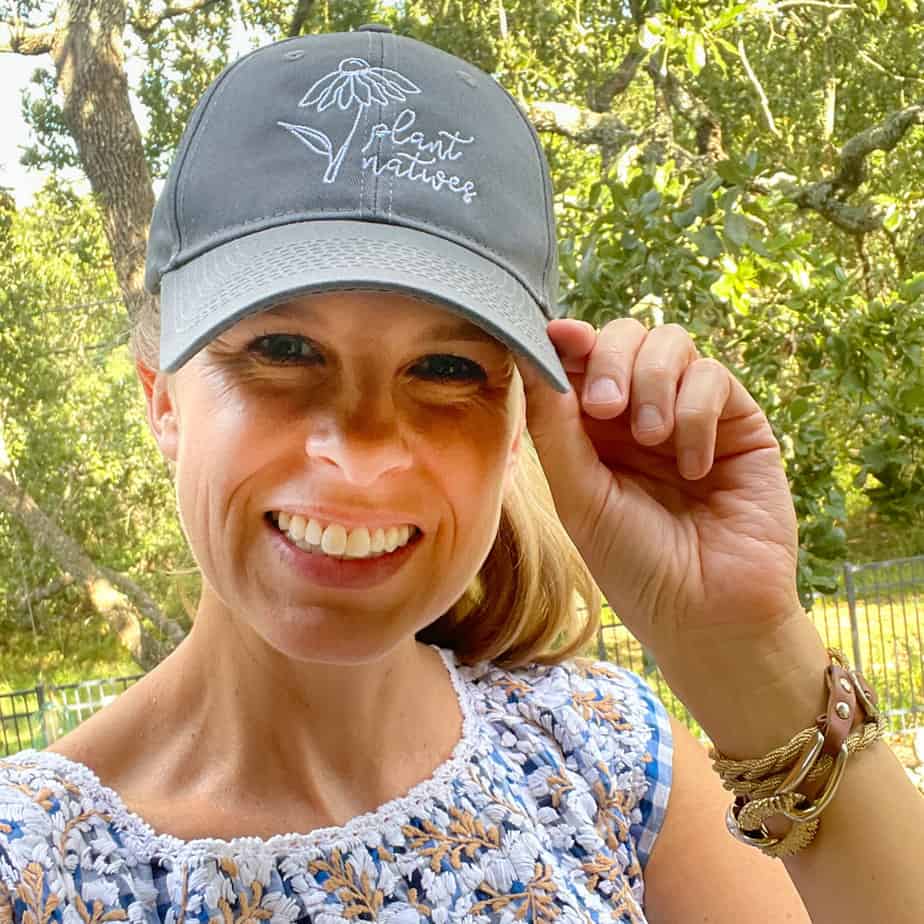
Welcome to Native Backyards! I’m Haeley from San Antonio, Texas, and I want to help you grow more native plants.
I have seen firsthand how the right plants can bring your yard to life with butterflies, bees, and birds. I’ve transformed my yard with Texas natives and I’m excited to share what I’ve learned with you.
Join my newsletter here! – each week I’ll send you helpful tips to make your native plant garden a reality!
Want to learn more about me and my garden? Check out my About page!
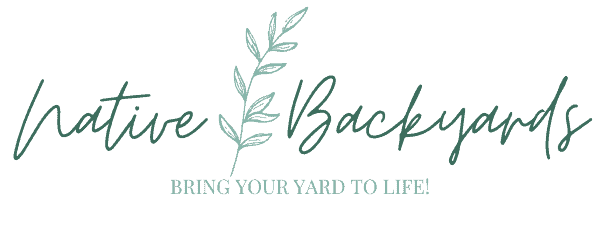
I plantes buffalo grass and the St. Augustine in my neighbor’s yard is invasive and trying to take over my yard which is really sad. In my backyard I planted hybrid Fescue because the Vermont Nursery said that it would make it in Texas but they actually lie because though it doesn’t die it stays Brown all summer. THEY won’t say whether it turns green in winter so I’m not sure what to do but I’m thinking to plant white clover which I hope will be green in the winter and even in the summer and makeup for the Fescue which is so ugly and brown. Alternativy i may get a landscape architect and plant all sorts of native plants and ground covers that don’t require hardly any water and can take over a hundred degrees in the summer. I planted a Magnolia and I’m going to do an Eastern Redbud and if you have any ideas for a tree 4 a small backyard let me know
Hi Carole, I’m sorry about your grass troubles! I say if the grass isn’t working, go for plants instead! I love Frogfruit for a groundcover that works in the sun, and Straggler Daisy is a great option for shady areas. Pigeonberry is another cool plant that grows in the shade and spreads easily. As for trees, how about a Texas Mountain Laurel, Possumhaw or Yaupon Holly? If you let me know what part of Texas you are in, I can give you some more suggestions suitable to your area.